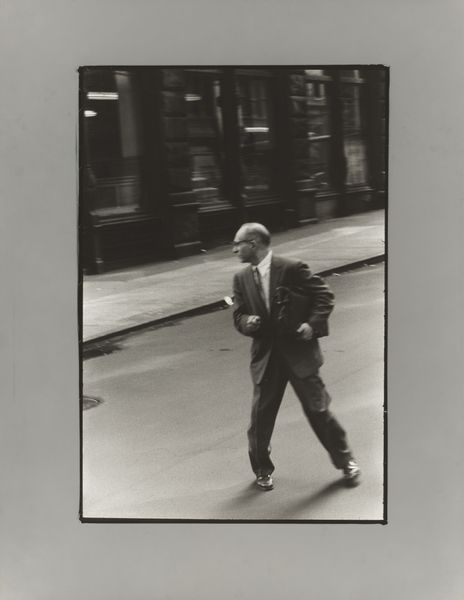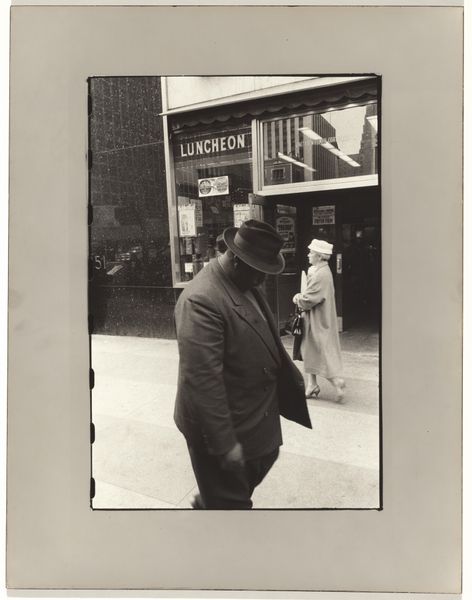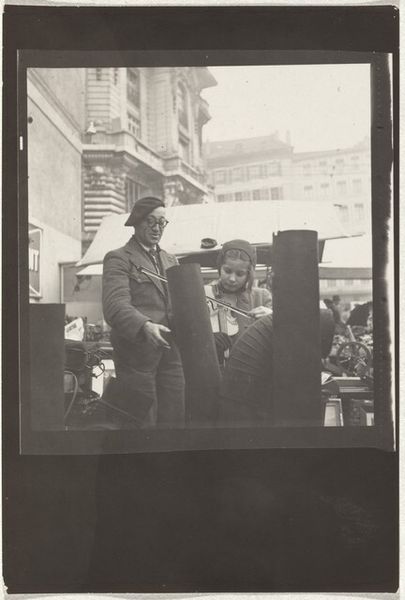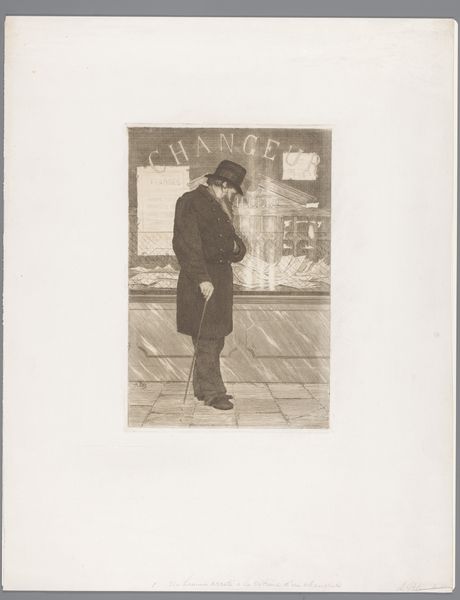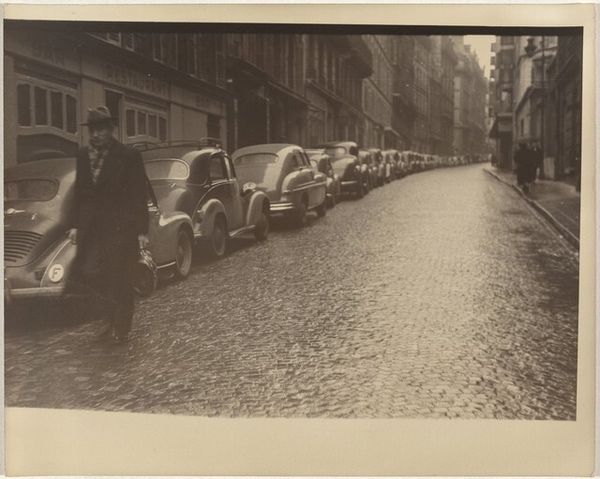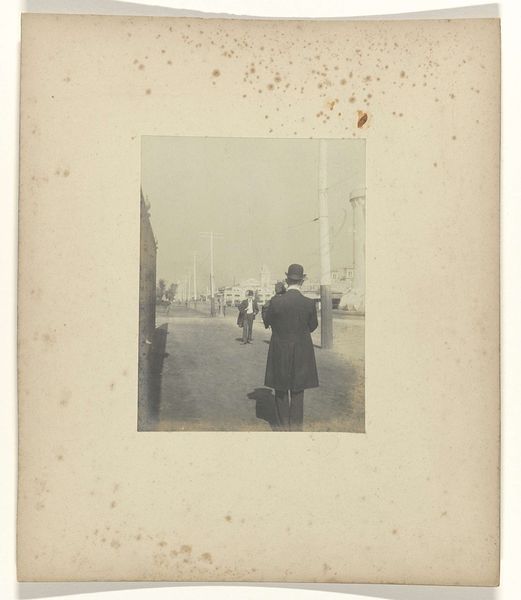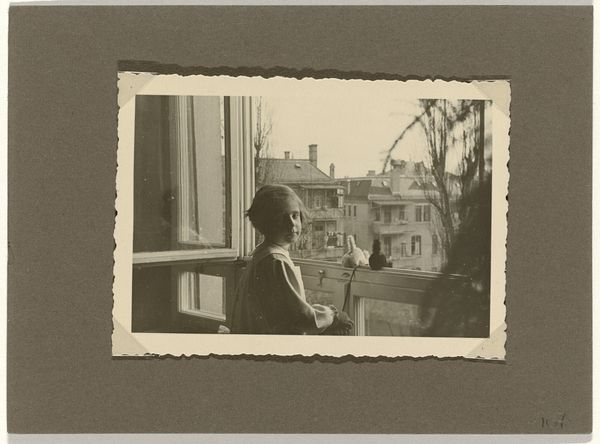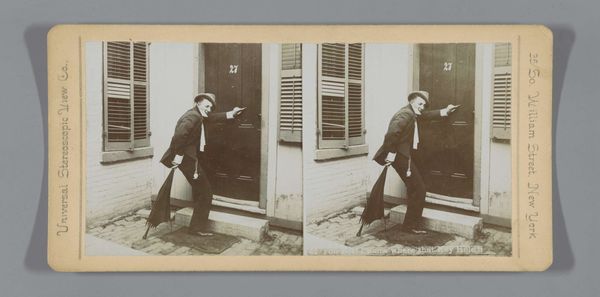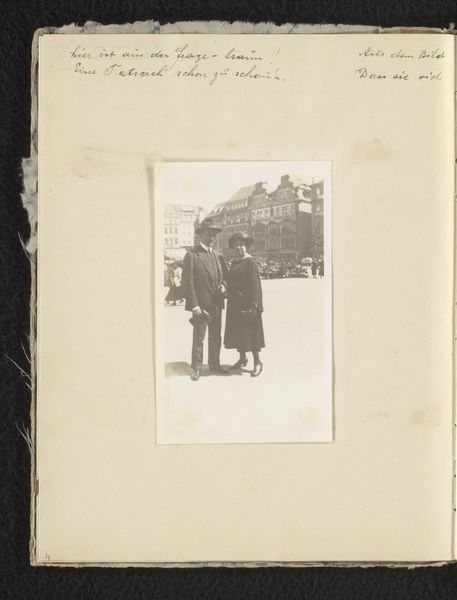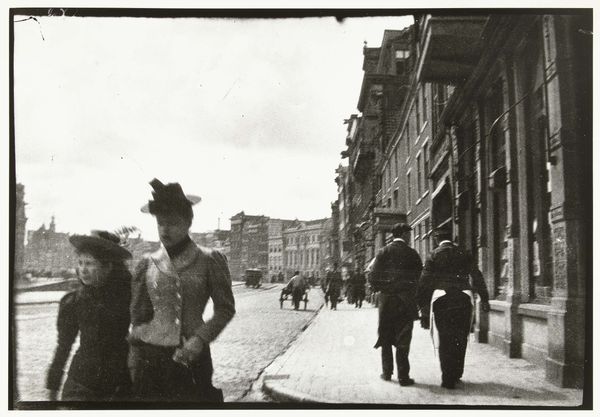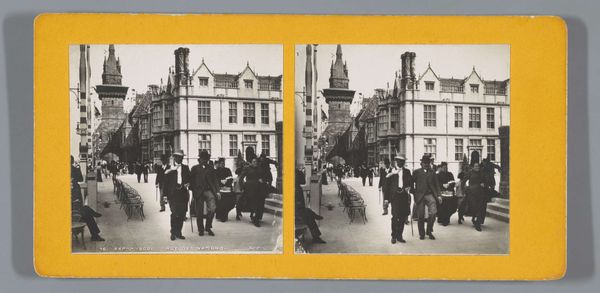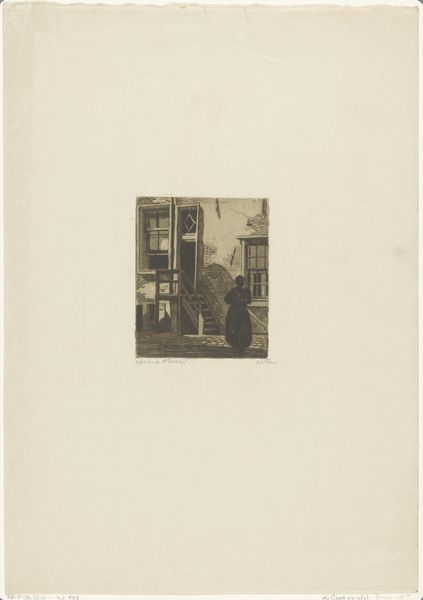
Dubbele foto van Mathilde Wachenheimer-Wertheimer gefotografeerd op de rug, met Meir Wachenheimer op de achtergrond Possibly 1896 - 1935
0:00
0:00
photography, gelatin-silver-print
#
portrait
#
print photography
#
street-photography
#
photography
#
historical photography
#
gelatin-silver-print
#
realism
Dimensions: height 90 mm, width 90 mm
Copyright: Rijks Museum: Open Domain
Editor: This gelatin silver print, possibly taken between 1896 and 1935, is called “Dubbele foto van Mathilde Wachenheimer-Wertheimer gefotografeerd op de rug, met Meir Wachenheimer op de achtergrond.” It presents two images of a woman walking away from the viewer. What strikes me is the voyeuristic quality and sense of capturing a moment. How do you interpret this work? Curator: It’s more than a captured moment; it's a record, perhaps unintentional, of social dynamics. This "double photo," by an anonymous photographer, offers a glimpse into the lives of Mathilde and Meir Wachenheimer, likely members of the Jewish community during a turbulent period. Editor: Turbulent how? Curator: Consider the historical context: between 1896 and 1935, antisemitism was on the rise in Europe. Photography itself, as a tool, gains new implications. Is this an innocent street scene, or does the act of photographing Mathilde from behind, her identity somewhat obscured, reflect a subtle power dynamic, an intrusion? What does it mean to have her image, and her husband’s, preserved without their explicit consent, potentially at a time when simply being Jewish could put one at risk? Editor: So, you're saying the photograph's meaning is shaped by the power dynamics and potential vulnerability of the subjects? Curator: Precisely. The "realism" the artwork presents must be interrogated beyond its surface. It prompts us to reflect on privacy, representation, and the responsibilities that come with documenting lives, especially those of marginalized communities. Whose gaze are we inheriting, and what does it tell us? Editor: That reframes how I see the image completely. I hadn't considered the ethical dimensions of a seemingly simple street photo. Curator: Understanding art involves understanding the world it reflects, and sometimes, the uncomfortable truths it reveals. Editor: Definitely food for thought, thank you!
Comments
No comments
Be the first to comment and join the conversation on the ultimate creative platform.
